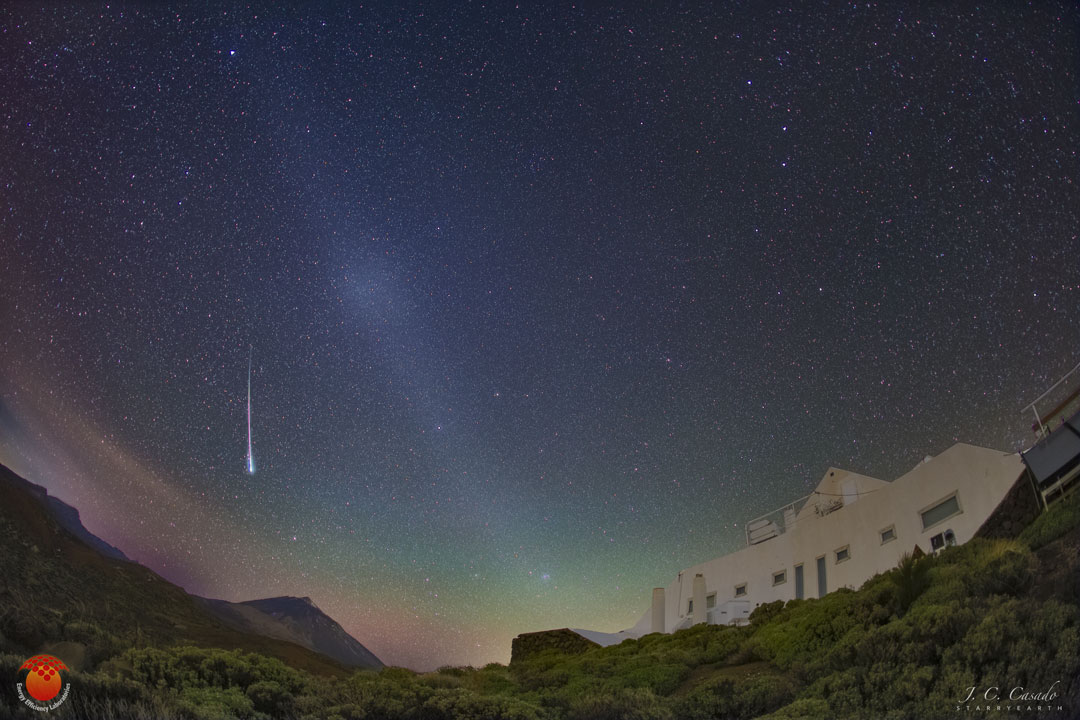2021年05月12日
A Meteor and the Gegenschein
Image Credit: J.C. Casado, StarryEarth, EELabs, TWAN
Explanation: Is the night sky darkest in the direction opposite the Sun? No. In fact, a rarely discernable faint glow known as the gegenschein (German for “counter glow”) can be seen 180 degrees around from the Sun in an extremely dark sky. The gegenschein is sunlight back-scattered off small interplanetary dust particles. These dust particles are millimeter sized splinters from asteroids and orbit in the ecliptic plane of the planets. Pictured here from last March is one of the more spectacular pictures of the gegenschein yet taken. The deep exposure of an extremely dark sky over Teide Observatory in Spain’s Canary Islands shows the gegenschein as part of extended zodiacal light. Notable background objects include a bright meteor (on the left), the Big Dipper (top right), and Polaris (far right). The meteor nearly points toward Mount Teide, Spain’s highest mountain, while the Pyramid solar laboratory is visible on the right. During the day, a phenomenon like the gegenschein called the glory can be seen in reflecting air or clouds opposite the Sun from an airplane.
Tomorrow’s picture: open space
[rml_read_more]
流星与对日照
影像提供: J.C. Casado, StarryEarth, EELabs, TWAN
说明: 与太阳反向的夜空最黝黑吗?非也!事实上,在极幽暗的夜空中,与太阳相隔180度的方向,可以看到称为对日照的微弱辉光。对日照是阳光被行星际尘埃粒子反向散射所造成的景观。而这些位在黄道面上,大小只有几毫米的尘埃粒子,则是从小行星裂解出来的碎片。上面这张摄于去年3月的照片,是有史以来最引人注目的对日照影像之一。这张摄于西班牙加那利群岛的深空影像,呈现在泰德天文台上方极幽暗的夜空中,沉浸在大范围黄道光里的对日照。在影像背景里,较醒目的天体有火流星(左侧)、北斗七星(右上角)、和北极星(右缘)。这颗流星看似直冲西班牙最高的泰德峰而去,而右侧的建物为金字塔太阳实验室。白昼时,在飞机上常可见到和太阳反向的空气或云反射阳光,形成和对日照相类似的宝光现象。 (gegenschein 对日照;德文意为”对面的辉光”)
明日的图片: open space



